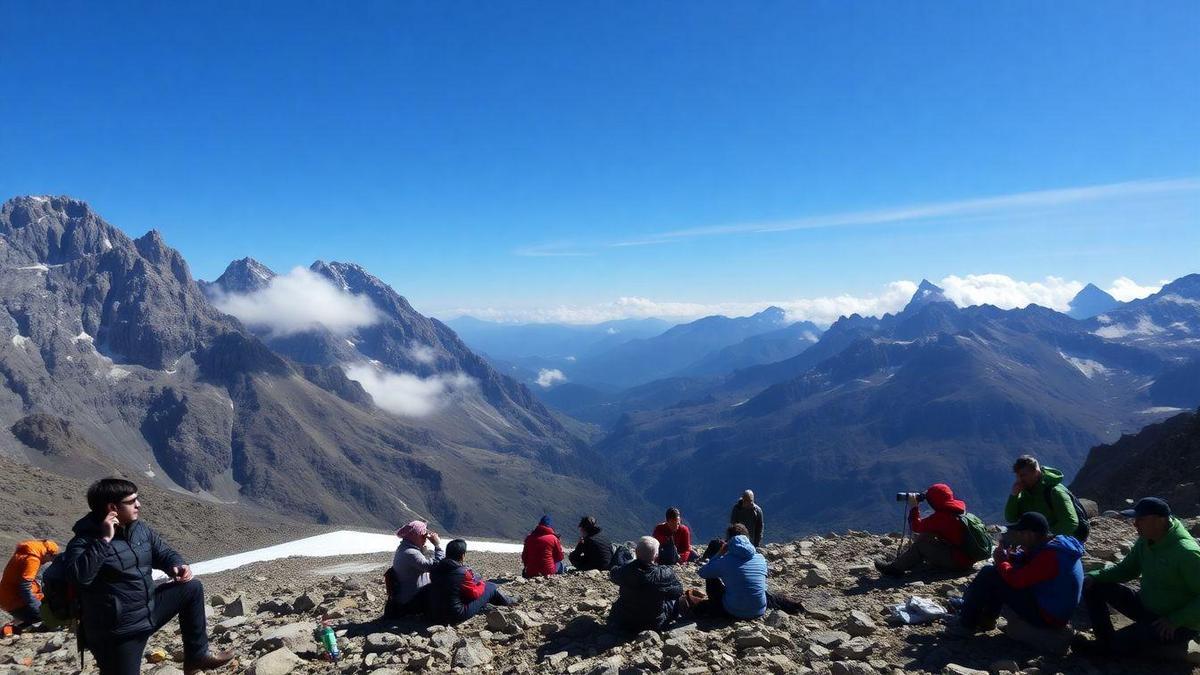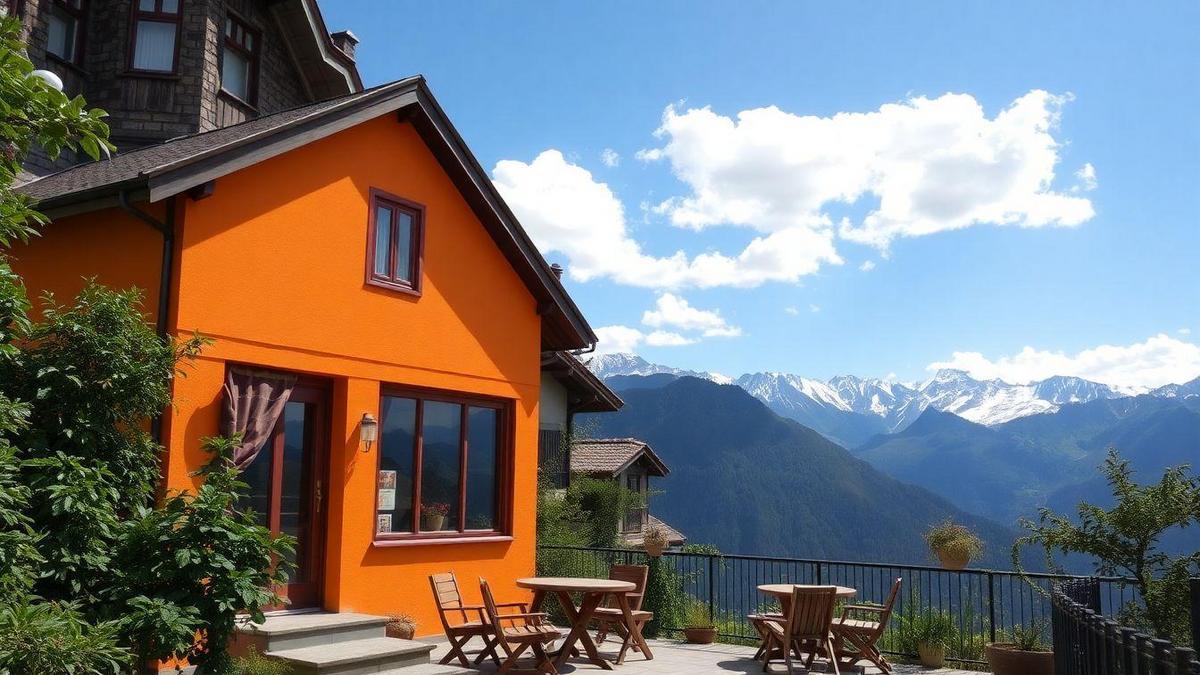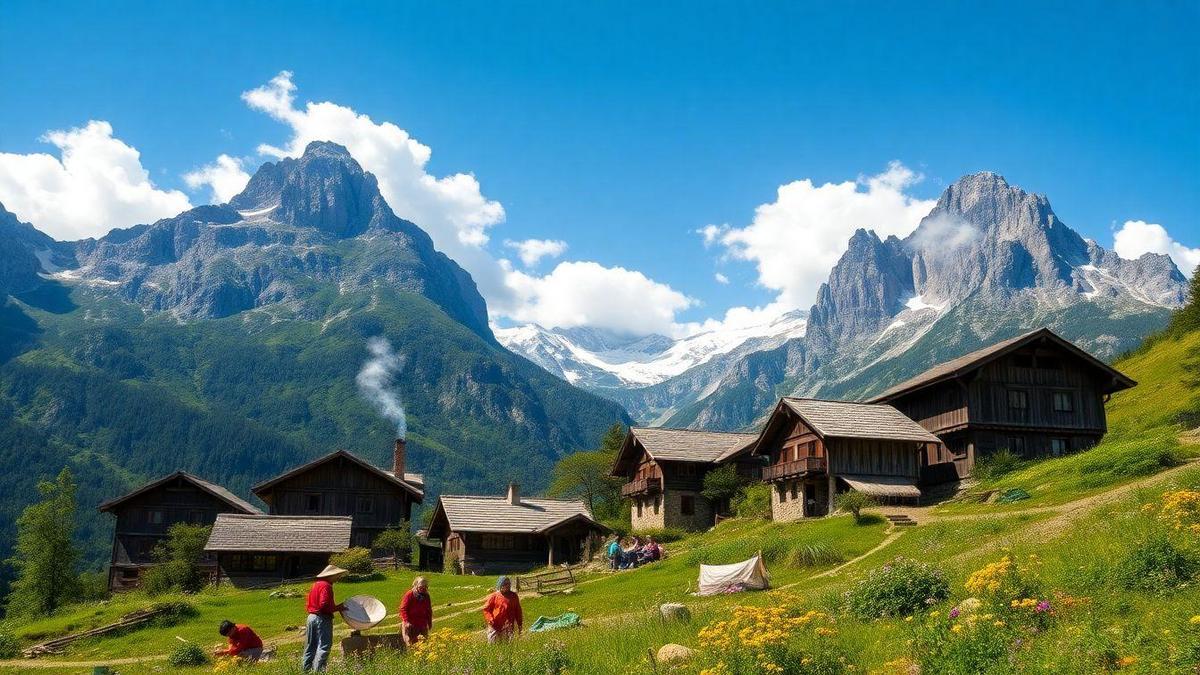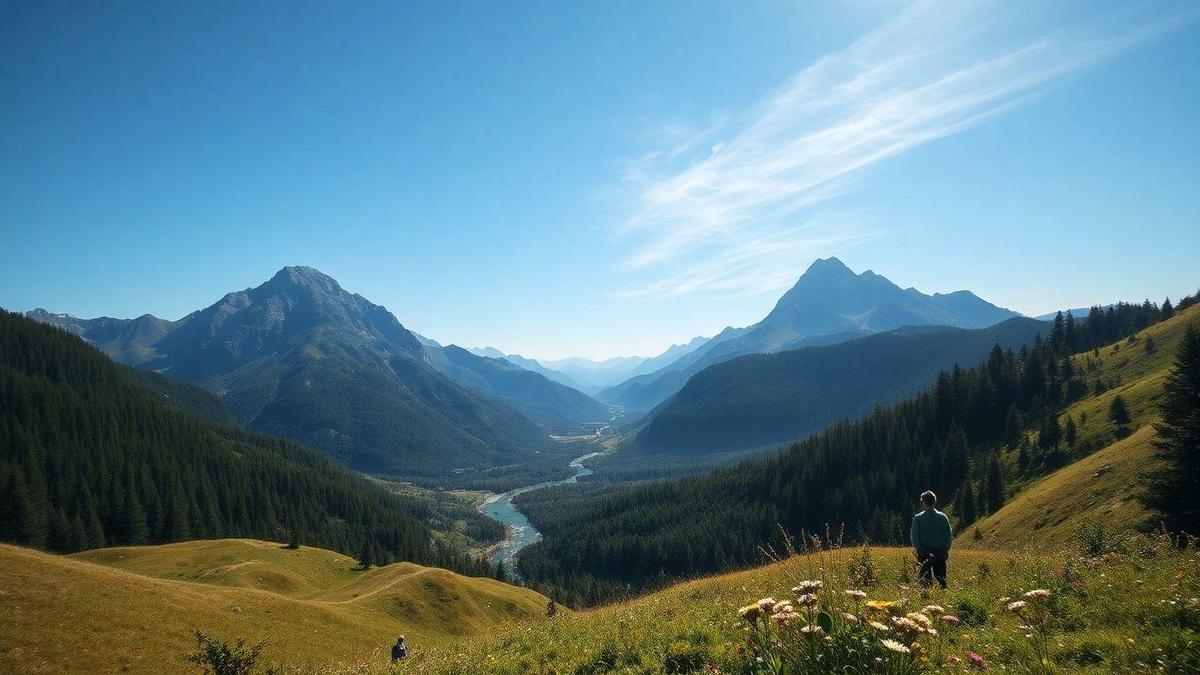
Understanding Acclimatization Techniques
What Happens to Your Body at High Altitudes
When you climb a mountain, your body faces big changes. At high altitudes, the air is thinner, meaning there’s less oxygen for you to breathe. Your body starts to work harder to get the oxygen it needs. You might feel short of breath, even when resting. Your heart rate may speed up, and you might feel tired more quickly.
Here’s a quick look at how your body reacts:
| Body Response | Description |
|---|---|
| Increased Heart Rate | Your heart pumps faster to circulate oxygen. |
| Breathing Changes | You breathe deeper and faster. |
| Fluid Changes | Your body may retain more fluid. |
Key Signs of Altitude Illness
Altitude illness can sneak up on you. It’s important to know the signs. If you notice any of these symptoms, pay attention:
- Headache: Often one of the first signs.
- Nausea: You might feel sick to your stomach.
- Dizziness: Feeling lightheaded? That’s a warning.
- Fatigue: If you’re more tired than usual, it could be a sign.
Recognizing Symptoms Early
Catching symptoms early can make a huge difference. If you feel any of the signs mentioned above, it’s time to take a break. Rest, drink water, and don’t push yourself. It’s better to be safe than sorry. Remember, climbing a mountain is not just about reaching the top; it’s about enjoying the journey and staying healthy along the way.
Importance of Gradual Ascent Strategies
Why You Should Climb Slowly
Climbing a mountain is an exciting adventure, but it can also be tough on your body. Climbing slowly is crucial because it allows your body to adjust to the changing altitude. When you rush, you risk getting sick from altitude sickness, making your climb uncomfortable and even dangerous. By taking your time, you give your body a chance to adapt, allowing you to enjoy the climb without feeling sick.
How to Plan Your Climb
Planning your climb is like drawing a map for a journey. Here are some best practices for acclimatization during high-altitude climbs:
- Choose the Right Route: Pick a trail that allows for gradual elevation gain.
- Set Realistic Goals: Decide how far you want to climb each day.
- Monitor Your Body: Pay attention to how you feel. If you start feeling unwell, it’s okay to slow down or take a break.
Here’s a simple table to help you plan your climb:
| Day | Elevation Gain | Distance | Rest Day Needed? |
|---|---|---|---|
| 1 | 1,000 feet | 5 miles | No |
| 2 | 800 feet | 4 miles | Yes |
| 3 | 1,200 feet | 6 miles | No |
| 4 | 500 feet | 3 miles | Yes |
Setting Up Rest Days for Acclimatization
Rest days are your best friends on a climb. They help your body recover and adjust. When you plan your climb, make sure to include these rest days. Here’s how to do it:
- Take Breaks: After climbing for a few days, rest for one or two days. This will help your body catch up.
- Stay Hydrated: Drink plenty of water during your rest days. It helps keep your body healthy.
- Listen to Your Body: If you feel tired, don’t push yourself. It’s okay to take an extra day off.
Hydration at High Altitudes
Why Staying Hydrated is Crucial
When you’re climbing a mountain, hydration is essential. At high altitudes, the air is thinner, and your body works harder. This means you lose more water through breathing and sweat. If you don’t drink enough, you might feel tired, get headaches, or even face serious health issues. Keeping your body hydrated helps you climb better and enjoy the journey.
Tips for Drinking Enough Water
Here are some easy tips to help you drink enough water while climbing:
- Drink Regularly: Take small sips often instead of gulping down a lot at once.
- Set Reminders: Use your watch or phone to remind you to drink every hour.
- Flavor Your Water: If plain water doesn’t excite you, add some lemon or a splash of juice.
- Carry Water Packs: Use a hydration pack or water bottles that are easy to reach while climbing.
- Monitor Your Intake: Keep track of how much water you drink each day. Aim for at least 3-4 liters.
| Activity Level | Water Intake (liters) |
|---|---|
| Light Hiking | 2-3 |
| Moderate Hiking | 3-4 |
| Intense Climbing | 4-6 |
Signs You Need More Hydration
Pay attention to your body. Here are some signs that you might need to drink more water:
- Dry Mouth: If your mouth feels parched, it’s a clear sign.
- Dark Urine: If your urine is dark yellow, you need to hydrate.
- Headaches: Frequent headaches can mean you’re not drinking enough.
- Fatigue: If you feel tired or sluggish, it might be due to dehydration.
Nutrition for Altitude Climbing
Foods That Boost Your Energy
When you’re climbing a mountain, energy is vital. You need foods that can give you the fuel to keep going. Here are some great options:
- Nuts and seeds: Packed with healthy fats and protein, they provide a quick boost and keep you feeling full.
- Dried fruits: Sweet, tasty, and loaded with natural sugars. Think raisins, apricots, and dates.
- Whole grains: Foods like oatmeal or whole-grain bread provide lasting energy and help you feel strong for longer.
- Protein sources: Jerky, protein bars, or even cheese can be great. They help repair your muscles after a long day of climbing.
What to Eat Before and During Your Climb
Before you hit the trail, make sure you’re eating the right foods. Here’s a simple guide:
Before Your Climb
- Breakfast: Start your day with a hearty meal. Think oatmeal with fruits or eggs with whole-grain toast. This gives you the energy to tackle the mountain.
- Hydration: Drink plenty of water. Staying hydrated is key to feeling good.
During Your Climb
- Snacks: Bring snacks like trail mix or energy bars. Eat small amounts every hour to keep your energy up.
- Electrolytes: If you sweat a lot, consider drinks with electrolytes to help balance your body.
Meal Planning for High-Altitude Adventures
Planning your meals ahead of time can make a big difference. Here’s a simple table to help you get started:
| Meal | Food Options |
|---|---|
| Breakfast | Oatmeal, eggs, whole-grain toast |
| Snack | Trail mix, energy bars, dried fruits |
| Lunch | Sandwich with lean meat, veggies |
| Dinner | Quinoa with vegetables, grilled chicken |
| Hydration | Water, electrolyte drinks |
With good nutrition, you can tackle those mountain trails with confidence. Remember, what you eat will impact how you feel and perform.
Physical Preparation for High Altitudes
Exercises to Get You Ready
When you think about climbing a mountain, physical preparation is key. You want to get your body ready for the challenge ahead. Here are some exercises that can help you:
- Walking or Hiking: Start with easy trails and slowly increase the difficulty. This builds your legs and gets your heart pumping.
- Stair Climbing: Find a set of stairs and climb them. It’s a great way to strengthen your legs and improve your endurance.
- Leg Strengthening: Squats and lunges can help build the muscles you need for steep climbs.
Building Stamina for Your Climb
Stamina is what keeps you going when the climb gets tough. To build your stamina, try these tips:
- Long Walks: Go for long walks or hikes on weekends. Aim for at least 3-5 hours to really push your limits.
- Interval Training: Mix short bursts of intense activity with rest. For example, sprint for 30 seconds, then walk for a minute.
- Breathing Exercises: Practice deep breathing to help your lungs adjust to less oxygen at high altitudes.
Importance of Strength Training
Strength training is not just for bodybuilders; it’s a crucial part of your mountain preparation. Here’s why:
- Supports Your Joints: Strong muscles help protect your knees and ankles on rough terrain.
- Improves Balance: Better balance means fewer falls, especially important on rocky paths.
- Boosts Confidence: When you feel strong, you’re more likely to tackle tough climbs with a smile.
Here’s a simple table to summarize the key exercises for each area of focus:
| Focus Area | Suggested Exercises |
|---|---|
| Leg Strength | Squats, Lunges, Step-ups |
| Stamina | Long Walks, Interval Training |
| Balance | Yoga, Stability Ball Exercises |
Mountain Acclimatization Best Practices
How to Monitor Your Progress
When you’re climbing a mountain, keeping track of how you feel is very important. You might notice changes in your body as you go higher. Here are some things to watch for:
- Headaches: A common sign of altitude sickness.
- Nausea: Feeling sick can mean you need to slow down.
- Fatigue: If you’re tired, it’s okay to take a break.
- Breathing: Pay attention to your breath. Is it harder to breathe?
Keeping a journal can help you remember how you felt each day. Write down your symptoms and any changes. This way, you can see patterns and know when to take it easy.
Adjusting Your Climb Based on Your Body
Your body is your best guide when climbing. If you feel off, it’s time to listen. Here’s how to adjust:
- Take Breaks: Don’t rush. Short rests can help you recover.
- Drink Water: Staying hydrated is key. Aim for at least 3-4 liters a day.
- Lower Your Elevation: If you feel really bad, it might be best to go down a bit. This can help you feel better quickly.
Remember, everyone is different. What works for one person might not work for you. Trust your instincts and don’t be afraid to change your plan.
Tips for a Successful High-Altitude Experience
To make your climb smoother, here are some handy tips:
| Tip | Description |
|---|---|
| Climb Slowly | Take your time to let your body adjust. |
| Eat Well | Fuel your body with healthy snacks. |
| Stay Warm | Dress in layers to keep your body temperature stable. |
| Buddy System | Climb with a partner. It’s safer and more fun! |
These best practices for acclimatization during high-altitude climbs can help you enjoy your adventure more. Each step you take can be a step towards a successful climb.
Frequently Asked Questions
What are the best practices for acclimatization during high-altitude climbs?
Take your time. Climb slowly and listen to your body. This is key.
How long should you spend at a certain altitude?
Stay at a new altitude for at least 24 hours. If you feel good, you can move up.
Can you drink alcohol during acclimatization?
It’s best to avoid alcohol. It can make altitude sickness worse.
What symptoms should you watch for during acclimatization?
Look for headache, nausea, and dizziness. These may mean you need to descend.
Should you use medication to help with acclimatization?
Talk to a doctor first. Some medicines can help, but it’s best to get advice.


